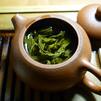The main dietary cause of high cholesterol is saturated fat. Saturated fat can come from animal products which raise LDL (low-density lipoprotein) cholesterol. This is the bad type which can increase the risk of a heart attack, stroke, Alezheimer’s disease, and fatty liver disease. To avoid this type, watch your consumption of full-fat meat and dairy.
Try substituting almond or organic soy milk for regular milk, and choose vegetarian meal options as much as possible. Soy, found in tofu, edamame, and soy milk, is low in saturated fat and can lower LDL cholesterol. Check out our recipe for almond milk here.
All cholesterol in food comes from animal or animal by-products, like meat, eggs, and dairy. These levels in food can be seen on any nutrition label. This number does not translate exactly into blood cholesterol levels, although some people respond to it more acutely. In healthy adults, the recommended limit of cholesterol in food is 300mg, while individuals at higher risk should limit intake to 200mg per day. For reference, one egg, contains 186mg while fruits and vegetables contain none.
Check out some of our healthy and popular recipes made by San Diego’s local Chef, Chad Kilgore.
Fiber reduces LDL cholesterol levels by binding to it and bringing it into the digestive system, which processes it out of the body. Aim for 20 - 35 grams of fiber, Harvard Health Publishing recommends. One cup of oatmeal contains 4 grams of fiber and one cup of black beans has 15 grams. Meat does not contain any fiber. Other good sources of fiber include whole-wheat bread, brown rice, fruit, and vegetables.
The American Heart Association recommends that the majority of fat in your diet comes from unsaturated fat. Unsaturated fats can lower LDL cholesterol. Sources of unsaturated fats include avocado, nuts, seeds, and olives.
Some unsaturated fats also contain omega-3 fatty acids. These can lower your cholesterol by slowing plague build up in the blood vessels. The body cannot produce omega-3 on its own so it is important to add them to your diet. Good sources of omega-3 are chia seeds, fish, and ground flax seeds.
Trans fats both raise LDL and lower HDL cholesterol! Trans fats are indisputably dangerous and important to avoid. In the US, a product which contains 0.5 grams or less of trans fat can be legally listed as containing 0 trans fats. To avoid hidden trans fats, read ingredient lists and watch out for hydrogenated vegetable oils. Avoid fried food and baked goods containing shortening.
Amsety has introduced the first nutrition bar including the Super 16 Vitamin & Mineral Mix®. Amsety Bars were created specifically to meet the dietary requirements of individuals with liver conditions and support liver health. Amsety Bars are very low in sodium, gluten free, dairy free, vegetarian, non-GMO, organic and contain no refined sugars! Find out more why 98% of physicians would recommend Amsety Bars for a healthy liver diet.

Discover the first nutrition bars designed to support liver health.
Read more >The ideal diet is primarily vegetarian, low in dairy, high in fruit, vegetables, whole grains, nuts, seeds, and beans. To get on the right track, aim to eat 4 fruits a day and choose vegetarian meals more often. Remember, you don’t have to sacrifice taste to eat healthy so try Amsety Bars today! Shop here

Liver Disease Symptoms To Watch Out

How To Lose Weight For A Healthy Liver?

How To Cook Liver-Healthy Food On A Budget

Fiber for Health and Weight Loss

Is Green Tea Good For Your Liver Health?
What´s your Liver Health Score?
Find out whether you are leading a livery-health lifestyle

Kitchen Companion Printable
Get a FREE monthly printable with liver health tips for your kitchen.
